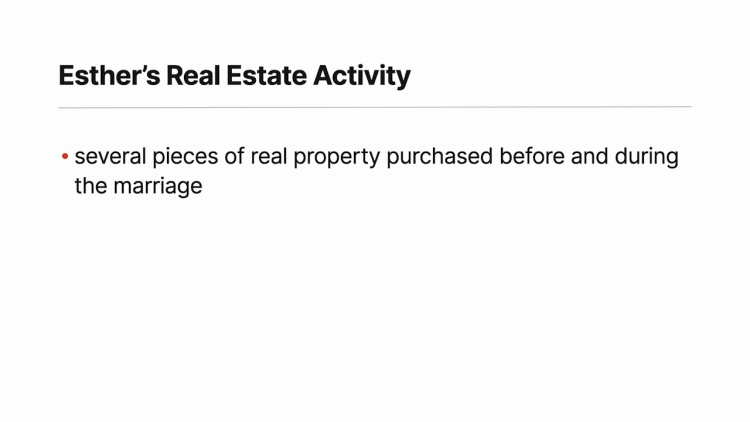Marriage of Mix
California Supreme Court
536 P.2d 479 (1975)
- Written by Maggy Gregory, JD
Facts
Richard Mix and Esther Mix were married. While married, Esther owned income-producing real property and other assets. The couple opened a joint bank account and deposited their respective incomes into the account during the marriage. Esther’s income was significantly higher than Richard’s. Esther purchased additional property for investment purposes during the marriage, using funds from both the joint bank account containing comingled funds and other bank accounts containing Esther’s separate funds. The couple separated, and the trial court dissolved the marriage. During the dissolution proceeding, Esther claimed that the property she purchased during the marriage was her separate property. Esther introduced a finance schedule prepared by an accountant into evidence. The schedule listed the sources of Esther’s separate funds, the dates on which Esther purchased property during the marriage, the cost of the property, and the amount of Esther’s separate funds that remained after each purchase. The schedule demonstrated that Esther’s claimed separate-property purchases substantially matched her separate income in both time period and amount. Esther testified that the schedule was an accurate representation of her income and expenses. Richard argued that because there were no bank records accompanying most of the entries on the schedule, Esther could not overcome the presumption that property acquired during marriage is community property. The trial court found in favor of Esther, ordering that any property in her name or possession not specifically found to be community property was her separate property. Richard appealed.
Rule of Law
Issue
Holding and Reasoning (Sullivan, J.)
What to do next…
Here's why 899,000 law students have relied on our case briefs:
- Written by law professors and practitioners, not other law students. 47,000 briefs, keyed to 994 casebooks. Top-notch customer support.
- The right amount of information, includes the facts, issues, rule of law, holding and reasoning, and any concurrences and dissents.
- Access in your classes, works on your mobile and tablet. Massive library of related video lessons and high quality multiple-choice questions.
- Easy to use, uniform format for every case brief. Written in plain English, not in legalese. Our briefs summarize and simplify; they don’t just repeat the court’s language.





